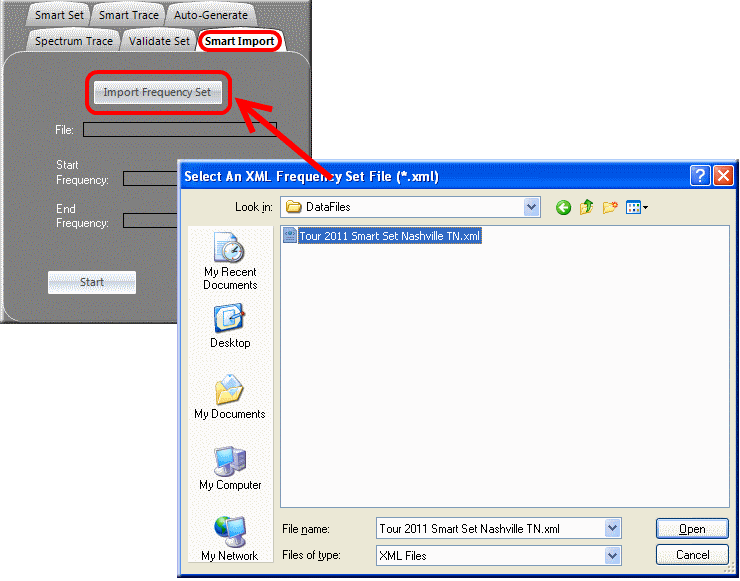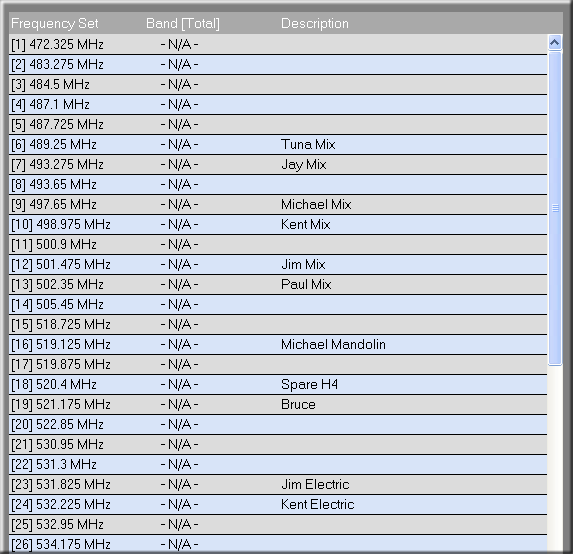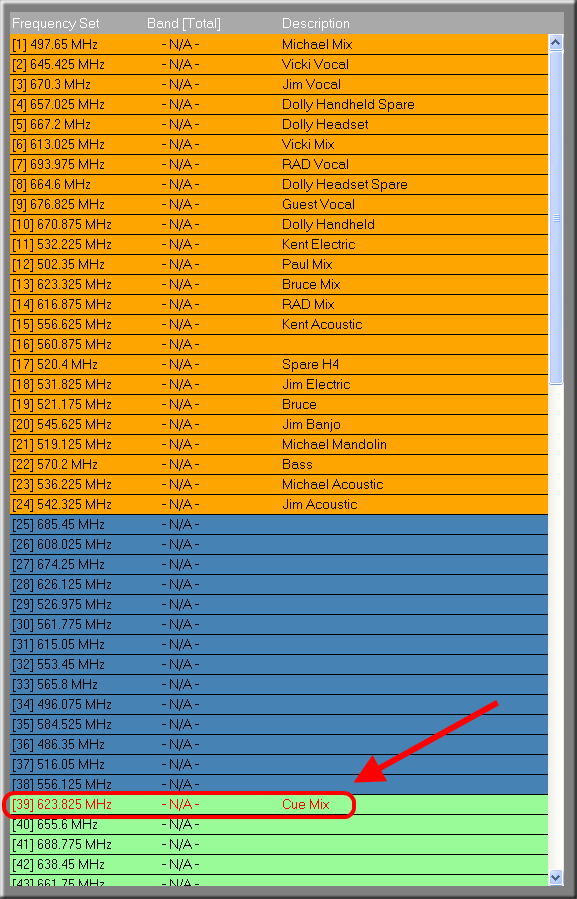
This mode is used when you have an existing frequency set that includes "reserved" frequencies that you wish to re-use. The Smart Import mode allows you to build a new frequency set around those reserved frequencies (see Reserved Frequencies).
NOTE: A reserved frequency is one that will always be included in the frequency set that results from an intermodulation analysis. This provides a means for a user to enter one or more frequencies into the coordination for those instances where a particular device is considered mandatory. For example, facilities or events often have a pool of existing equipment to which channels will need to be added. Also guest systems using preconfigured channels may have to be integrated and coordinated with resident systems.
To begin with, you import a frequency set that you had generated previously and saved (see Export Frequency Sets). As shown below, the imported frequency set uses a number of reserved frequencies (the ones with descriptions).

When you press the 'Start' button the computation begins. You'll notice that unlike the other modes, the 'Smart Set' mode requires multiple stages of computations before arriving at the final result.
The resultant Smart Frequency Set™ is a hybrid of 3 intermod stringencies or compatibility levels -- Strictest, Moderate and Lenient and correspond to the color codings of orange, blue and light green, respectively. Furthermore, within each group the frequencies are ranked from most-to-least reliable. For a more detailed discussion of how frequencies are ranked please refer to the section entitled 'Rank or Sort Frequencies'.
After the computation has completed the new Smart Frequency Set™ is displayed in the Results window. All the reserved frequencies in the imported set are also members of the new Smart Frequency Set™. You'll notice toward the bottom of the list the frequency with the 'Cue Mix' description is in red. This is because that frequency is not intermod-compatible with other frequencies in the set. However, because it is a reserved frequency the user considers to be mandatory, then it remains as part of the coordination. That it appears in red serves as a visual clue that it conflicts with one or more intermodulation products.
